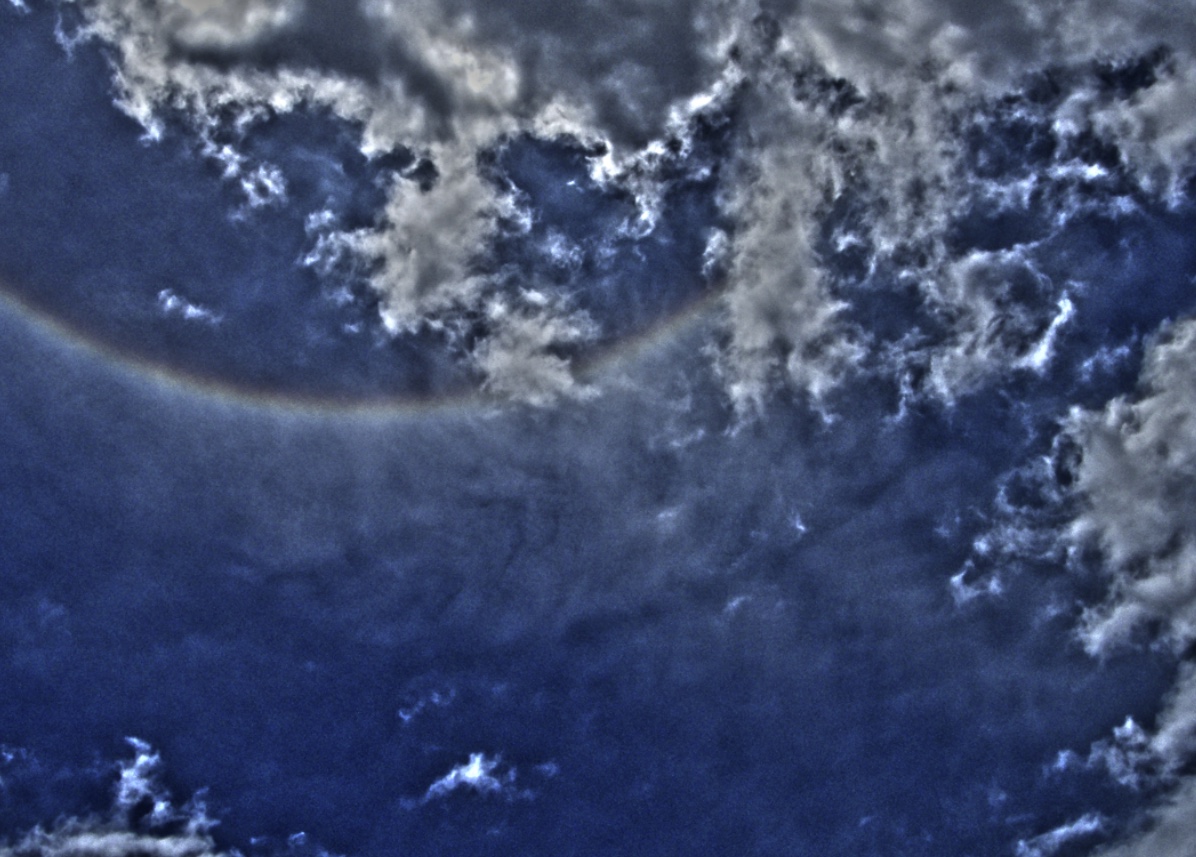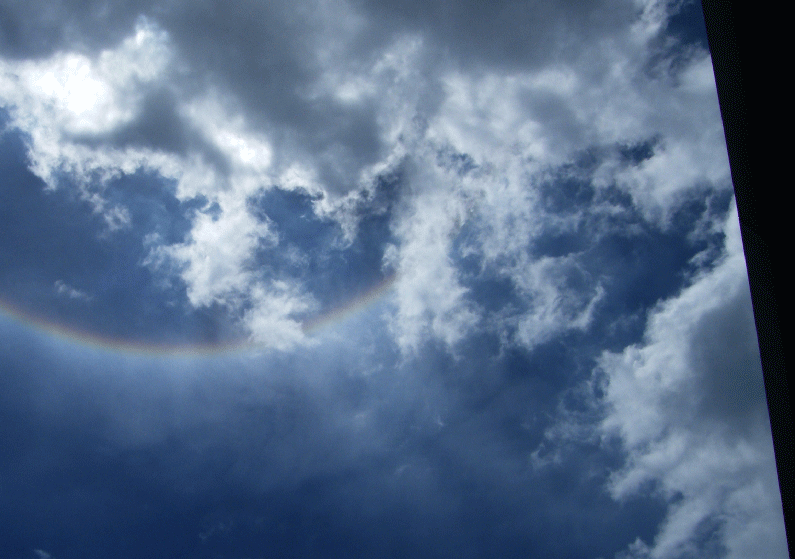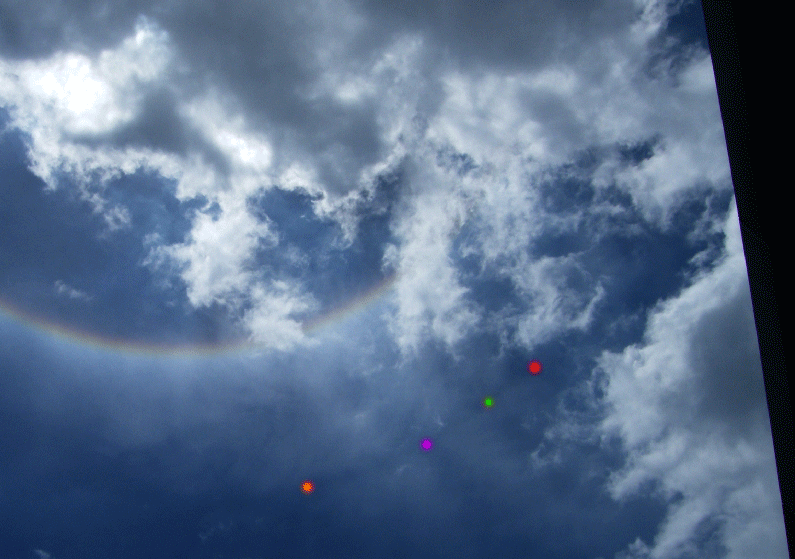Ian Jacobs
New Member
The halo (photographed in Bangkok) is probably a circumscribed halo (at 22 degrees) that is due to a predominance of longer hexagonal crystals that are falling horizontally.
The feature that I do not understand is the dark concentric circular arc at four-five o'clock at about 31 degrees. It persisted for about five minutes. Light is returned to the viewer from randomly oriented crystals outside the halo but why is this light interrupted at 31 degrees?
Has anyone seen or photographed similar?
Can anyone suggest a crystal shape and/or orientation that would produce this effect?
Three images taken over the course of a minute follow:
The feature that I do not understand is the dark concentric circular arc at four-five o'clock at about 31 degrees. It persisted for about five minutes. Light is returned to the viewer from randomly oriented crystals outside the halo but why is this light interrupted at 31 degrees?
Has anyone seen or photographed similar?
Can anyone suggest a crystal shape and/or orientation that would produce this effect?
Three images taken over the course of a minute follow:
Last edited:



